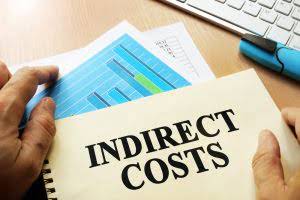
That’s cash that can be put to work for future growth or bigger dividends to owners. The time value of money is that, in most cases, a dollar today is more valuable than a dollar in the future. Let’s say you own a small business and you decide you want to buy a new computer server at a cost of $5,000.

In this case, only 9 months of depreciation expense, or $5,400 ($7,200 x 9/12), is recorded on 31 December. To illustrate how to calculate partial year’s depreciation, assume that in the above example, the asset was purchased on 1 April rather than on 2 January. Furthermore, depreciation is often calculated monthly or quarterly for the preparation of interim statements.
Then divide the resulting figure by the total number of years the asset is expected to be useful, referred to as the useful life in accounting jargon. From buildings to machines, equipment and tools, every business will have one or more fixed assets likely susceptible to depreciate or wear out gradually over time. For example, with constant use, a piece of company machinery bought in 2015 would have depreciated by 2019. Four types of depreciation systems are commonly available within accounting. Depending on your particular business and the assets you are depreciating, you want to choose the method that most accurately reflects the rate of use and deterioration of your assets. Asset depreciation is designed to help companies spread out the purchase price of a more expensive piece of equipment throughout the years of its life cycle. Balance SheetA balance sheet is one of the financial statements of a company that presents the shareholders’ equity, liabilities, and assets of the company at a specific point in time.
She has nearly two decades of experience in the financial industry and as a financial instructor for industry professionals and individuals. Daniel Liberto is a journalist with over 10 years of experience working with publications such as the Financial Times, The Independent, and Investors Chronicle. He received his masters in journalism from the London College of Communication. Daniel is an expert in corporate finance and equity investing as well as podcast and video production.
Straight line depreciation is the simplest and most convenient way to describe the devaluation of an asset. With straightforward requirements, it is a versatile method that is applicable to most businesses and industries.
What Is Straight Line Basis?
This is an annual allowance for the deterioration, wear and tear and obsolescence of the property. For tax purposes, both tangible property, for example, furniture, iPads, and equipment and intangible property, such as computer software, copyrights, and patents are depreciable. Its assets include Land, building, machinery, and equipment; all of them are reported at costs. Every asset you acquire has a set value at the time of purchase, but that value changes over time. As a business owner, it’s important to know how to accurately report the value of your assets each year, and one of the best methods for doing so is called straight-line depreciation. To calculate the straight-line depreciation expense, the lessee takes the gross asset value calculated above of $843,533 divided by 10 years to calculate an annual depreciation expense of $84,353. Unlike the other methods, the units of production depreciation method does not depreciate the asset solely based on time passed, but on the units the asset produced throughout the period.
With straight-line depreciation, you must assign a “salvage value” to the asset you are depreciating. The salvage value is how much you expect an asset to be worth after its “useful life”.
It means that the asset will be depreciated faster than with the straight line method. The double-declining balance method results in higher depreciation expenses in the beginning of an asset’s life and lower depreciation expenses later. This method is used with assets that quickly lose value early in their useful life.
- We’re here to take the guesswork out of running your own business—for good.
- Also, since the asset had an estimated useful life of 10 years, the depreciation expense each year was 1/10 of the depreciable amount.
- From buildings to machines, equipment and tools, every business will have one or more fixed assets likely susceptible to depreciate or wear out gradually over time.
- Depreciation is an accounting method of allocating the cost of a tangible asset over its useful life to account for declines in value over time.
- As you can see, this formula is fairly simple to perform and offers a straightforward estimate as to the depreciation value of an asset.
- In the article, we have seen how the straight line depreciation method can be used to depreciate the value of the asset over the useful life of the asset.
For tax preparation purposes, you need to know exactly what you can and can’t deduct for depreciation. Beyond keeping you out of prison and audit nightmares, understanding https://www.bookstime.com/ depreciation will help you forecast your taxable income and deductions. Switching to real estate, imagine you buy a rental property for $150,000.
Annual Journal Entries
You expect to resell each desk for $20, or $300 total, at the end of seven years. To calculate the straight-line depreciation, you subtract $300 from $4,500 and divide by 7. You subtract the $50 scrap value from the $1,550 purchase price to reach $1,500 in depreciable value.
Then, you divide $1,500 by five years, to reach an annual depreciation of $300. When you’re interviewing for accounting roles, employers will expect you to understand common business terms and formulas like straight line depreciation. What will set you apart, however, is an ability to bridge accounting theories with real-time business practice, working well with various teams, and considering the human impact behind your work. If you want those standout skills for your job search, you should consider an online master’s in accounting degree from Yeshiva University’s Sy Syms School of Business. Owning a business requires constantly monitoring a variety of assets.
- He received his masters in journalism from the London College of Communication.
- Accumulated DepreciationThe accumulated depreciation of an asset is the amount of cumulative depreciation charged on the asset from its purchase date until the reporting date.
- Switching to real estate, imagine you buy a rental property for $150,000.
- The amount you spend on payroll can vary when you employ hourly workers.
- Here’s everything you need to know about this new informational IRS form.
- The IRS has categorized depreciable assets into several property classes.
Straight-line depreciation is widely used due to its simplicity and the fact that it allocates an equal amount of expense to each period of the asset’s life. However, in the real world, companies purchase assets at different times during the year, and a full year’s depreciation need not be taken on a partial year’s usage. It is easiest to use a standard useful life for each class of assets. Straight Line Depreciation is a depreciation method used to calculate an asset’s value that reduces throughout its useful life. Calculating depreciation allows you to spread the cost of an asset over several years. Straight-line depreciation is easier to calculate, so it simplifies your accounting process. Larger corporations that report earnings to interested stakeholders may prefer straight line depreciation because it does not lower net income in earlier years.
Accounting Vs Bookkeeping
Using the straight-line depreciation method, a company will allocate the same percentage of an asset’s value for each accounting period. Over time, this value will decrease as the asset’s value decreases. This method can be used to calculate the depreciation of both physical and intangible assets. Depreciation expense is the recognition of the reduction of value of an asset over its useful life. Multiple methods of accounting for depreciation expense exist, but the straight-line method is the most commonly used.
This means Sara will depreciate her copier at a rate of 20% per year. The easiest way to determine the useful life of an asset is to refer to the IRS tables, which are found in Publication 946, referenced above. Looking for the best tips, tricks, and guides to help you accelerate your business? Use our research library below to get actionable, first-hand advice. Case Studies & Interviews Learn how real businesses are staying relevant and profitable in a world that faces new challenges every day. Best Of We’ve tested, evaluated and curated the best software solutions for your specific business needs.

Deputy’s content team works closely with business owners, managers, and their employees to create helpful articles about how to make their worklife easier. The information contained in this article is general in nature and you should consider whether the information is appropriate to your needs. Hence, the Company will depreciate the machine by $1000 every year for 8 years.
Visualizing The Balances In Equipment And Accumulated Depreciation
Now divide this figure by the total product years the asset can reasonably be expected to benefit your company. It also expenses the same amount of money for each accounting period, making it easy to keep track of and incorporate into accounting records. Straight-line depreciation is considered one of the many conventions used by accountants to match expenses and sales during a set period of time in which they were incurred. Straight-line depreciation is a method of determining the amortization and depreciation of an asset. This calculation allows companies to realize the loss of value of an asset over a period of time. This type of depreciation method is easy to use and is highly recommended for companies which to calculate depreciation in a simple and effective manner.
It’s commonly used in insurance, software as a service , and other industries that collect up-front payments. It’s calculated by subtracting cost of goods sold from sales revenue. Here’s how you can use gross profit, and the gross profit margin, to measure your business’s production efficiency. Under this method, the firm does not invest the depreciation charge from the asset outside the firm. Because this method is easy and simple, therefore it suits firms that are small in size. When we mark the amount of depreciation charge and the charging periods on the graph, the result is a straight line.

The straight-line Depreciation method makes it easy for you to calculate the expense of any fixed asset in your business. It allows you to reduce the value of a tangible asset, thereby lowering your total expenses . Also, since the asset had an estimated useful life of 10 years, the depreciation expense each year was 1/10 of the depreciable amount. The straight-line depreciation method is the most convenient and commonly used, and it results in a few calculation errors only. We use this method when we do not know the asset’s consumption pattern over a specific time. This method depreciates the value of an asset at a constant rate; therefore, it is best to apply this method in a situation where the asset is reaping benefits at a constant rate. In reality, it is not possible for the asset’s use and efficiency to remain the same throughout its life.
Quick Review Of Assets And Expenses
Compared to the other three methods, straight line depreciation is by far the simplest. Accumulated depreciation is the total amount of depreciation expense allocated to a specific asset since the asset was put into use. A depreciation schedule is required in financial modeling to link the three financial statements in Excel.
- However, the useful life of the equipment in this example equals the lease term so at the end of the lease, the asset will be depreciated to $0.
- Both the design engineer’s estimated useful life of 2 years and the accountant’s estimated useful life of 4 years are correct .
- You subtract the $50 scrap value from the $1,550 purchase price to reach $1,500 in depreciable value.
- Therefore, Company A would depreciate the machine at the amount of $16,000 annually for 5 years.
- This will give you your annual depreciation deduction under the straight-line method.
This accounting tutorial teaches the Straight-line method of depreciation. We define the method, show how to depreciate an asset using the Straight-line method, and show the accounting transactions involved. However, when accounting for every asset in the plant, calculating financials can get tedious. Some CMMS providers solve this issue by having a depreciation tracking functionality. This essentially puts all the asset-related information in one place, so you can easily make more sense of it.
Alternatives Looking for a different set of features or lower price point? Check out these alternative options for popular software solutions. Construction Management CoConstruct CoConstruct is easy-to-use yet feature-packed software for home builders and remodelers. This review will help you understand what the software does and whether it’s right for you.
Join Over 140,000 Fellow Entrepreneurs Who Receive Expert Advice For Their Small Business Finances
Product Reviews Unbiased, expert reviews on the best software and banking products for your business. Beginner’s Guides Our comprehensive guides serve as an introduction to basic concepts that you can incorporate into your larger business strategy.
Common Depreciation Quirks
Some assets wear out over the years and begin losing their value; for example, computers, tools, equipment, vehicles and buildings can depreciate over time and must be repaired or replaced. In order for a business to accurately write off these expenses and file their taxes correctly, you need to calculate their amount of deprecation. The useful life of an asset is an estimate of how long the asset is expected to be used in the business. For example, a design engineer might purchase a new computer and estimate that the computer will be useful in the business for only 2 years . At the same time, an accountant might purchase a similar computer and estimate that it will be useful in the accounting business for 4 years. Both the design engineer’s estimated useful life of 2 years and the accountant’s estimated useful life of 4 years are correct . When the asset’s book value is equal to the asset’s estimated salvage value, the depreciation entries will stop.
Accountingtools
The straight-line depreciation method makes it easy for you to calculate the expense of any fixed asset in your business. With straight-line depreciation, you can reduce the value of a tangible asset. Whether you’re creating a balance sheet to see how your business stands or an income statement to see whether it’s turning a profit, you need to calculate depreciation. Straight-line Straight Line Depreciation depreciation is a simple method for calculating how much a particular fixed asset depreciates over time. In CFI’s free Accounting Fundamentals Course we explore balance sheets, and income and cash flow statements, then show how to prepare them from scratch. The units of production method is based on an asset’s usage, activity, or units of goods produced.








